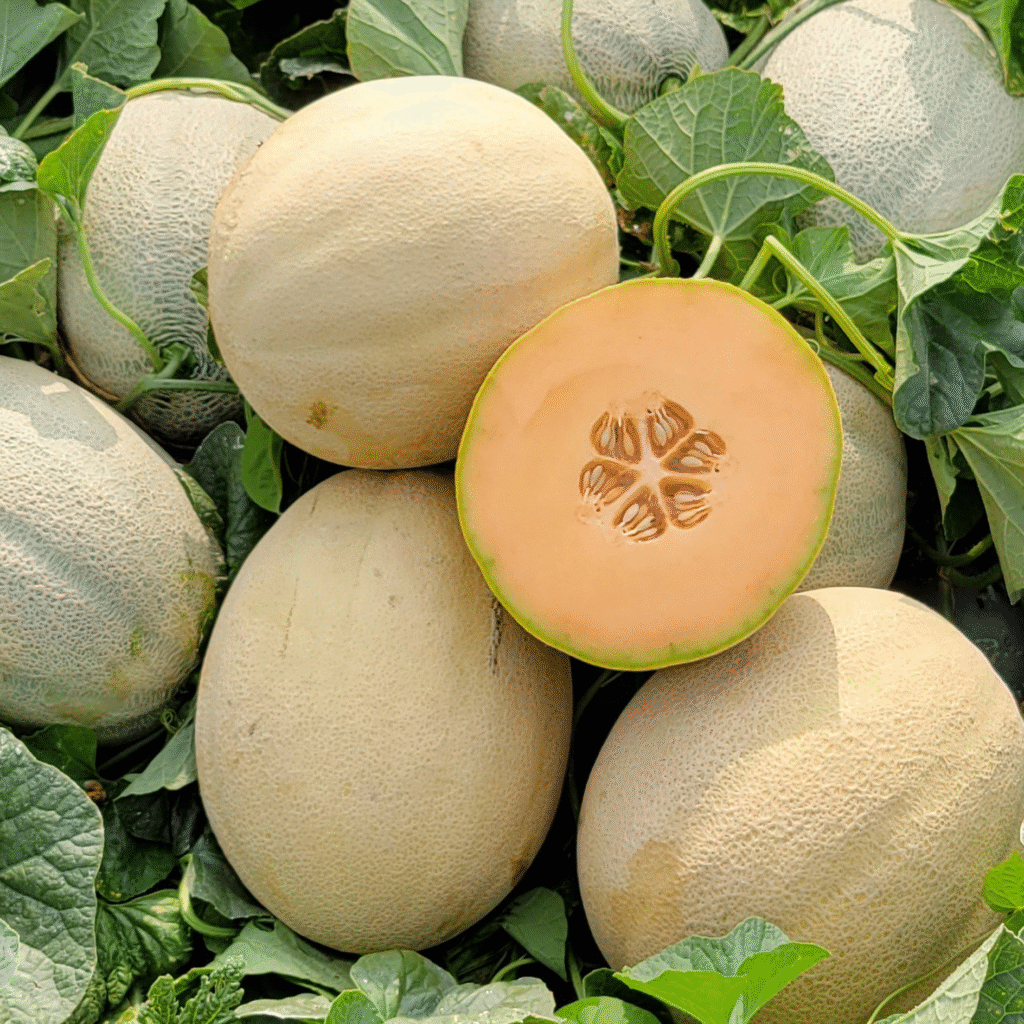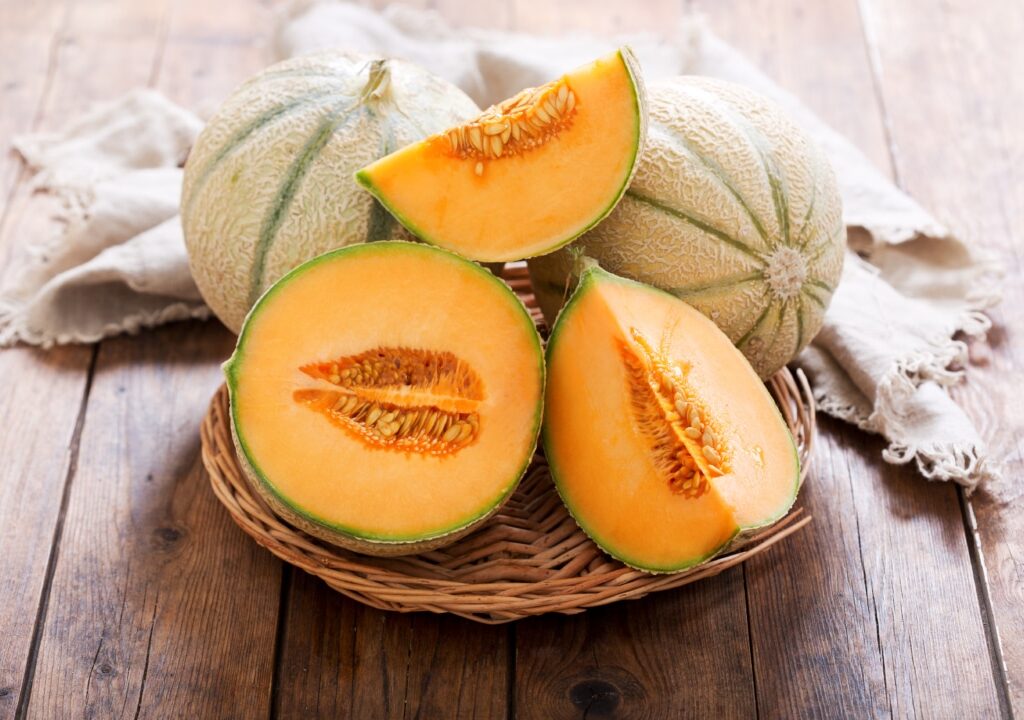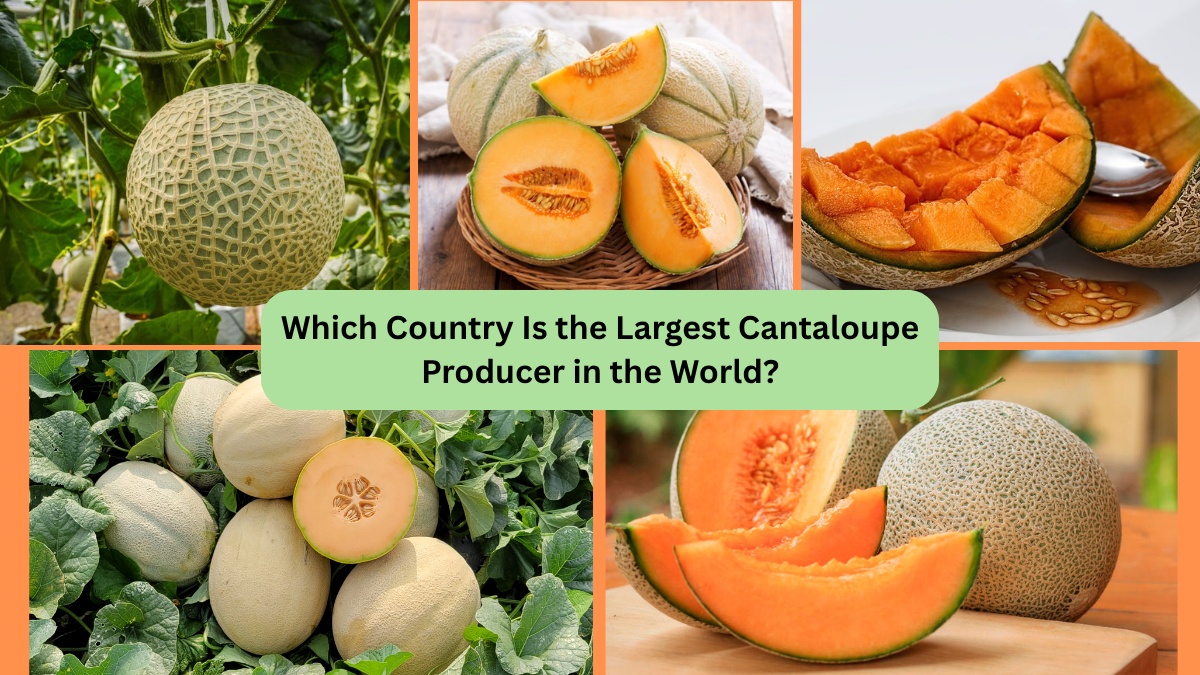When the sun blazes overhead and summer’s heat reaches its peak, few fruits can rival the sweet, refreshing taste of a perfectly ripe cantaloupe. Known for its succulent orange flesh, subtle floral aroma, and hydrating properties, the cantaloupe has long been a favorite at picnics, parties, and breakfast tables around the world.
But have you ever wondered which country grows the most cantaloupes? The answer might surprise you — China is the largest cantaloupe producer in the world. In fact, China’s production of this juicy melon is so extensive that it accounts for more than half of the global output.
In this article, we’ll explore how China achieved this dominant position, discover other major producers, trace the cantaloupe’s rich history, and learn about its varieties, health benefits, and growing popularity across the globe.
A Quick Introduction to Cantaloupes

Cantaloupe, also known as muskmelon in many parts of the world, belongs to the Cucurbitaceae family, which includes watermelons, cucumbers, and pumpkins. The fruit is botanically classified as Cucumis melo and comes in several varieties differing in size, color, and rind texture.
The term “cantaloupe” can refer to different types depending on the region:
- In the United States, it typically describes a netted-rind melon with bright orange flesh.
- In Europe, it refers to a smoother-skinned variety known as the European Cantaloupe.
Regardless of the variety, cantaloupes are prized for their:
- Juicy sweetness
- Refreshing flavor
- High water content (about 90%)
- Abundance of nutrients like vitamin A, C, potassium, and antioxidants
A Brief History of Cantaloupes
Cantaloupes have a rich and fascinating history that dates back thousands of years. The fruit is believed to have originated in Persia (modern-day Iran), India, and parts of Africa. From there, it spread to the Mediterranean region and was introduced to Europe through trade.
The name “cantaloupe” itself is derived from Cantalupo, a town near Rome, Italy, where the fruit was reportedly cultivated in the papal gardens during the Renaissance.
By the 16th century, cantaloupes made their way to the Americas, where they quickly gained popularity in warm, sunny regions ideal for melon farming.
Global Cantaloupe Production: The Numbers
Cantaloupe is now grown in dozens of countries across Asia, the Americas, and the Mediterranean. According to the latest data from the Food and Agriculture Organization (FAO):
Top Cantaloupe Producing Countries (Approximate Annual Production)
| Rank | Country | Production (Metric Tons) |
|---|---|---|
| 1 | China | Over 13 million |
| 2 | Turkey | 1.7 million |
| 3 | India | 1.3 million |
| 4 | Iran | 730,000 |
| 5 | Egypt | 650,000 |
As evident from these numbers, China produces nearly 60% of the world’s cantaloupes, an astounding figure that makes it the clear leader in cantaloupe cultivation.
Why Is China the Largest Cantaloupe Producer?

Several factors have propelled China to the top of global cantaloupe production:
1. Expansive Agricultural Land and Ideal Climate
China’s vast agricultural regions, particularly in Xinjiang, Hebei, and Shandong provinces, offer optimal conditions for cantaloupe farming. The country’s:
- Warm, sunny summers
- Rich, well-drained soils
- Low humidity
create a perfect environment for producing large, flavorful, and aromatic cantaloupes.
2. High Domestic Demand
In China, cantaloupes are immensely popular, especially during the hot summer months. Markets, street stalls, and supermarkets are stocked with this cooling fruit, making it a staple in fruit salads, desserts, and smoothies.
3. Cultivation of Regional Varieties
China boasts several unique cantaloupe varieties, such as:
- Hami melon: Known for its crisp, honey-sweet flesh and long shelf life.
- Xinjiang muskmelon: Famous for its distinctive fragrance and juicy texture.
These varieties cater to diverse consumer tastes and allow China to dominate both local and international markets.
4. Agricultural Innovation and Government Support
Chinese farmers have embraced:
- Modern greenhouse farming
- Hybrid seed varieties
- Efficient irrigation systems
- Pest control and post-harvest management
Combined with government subsidies and agricultural research programs, these advancements have dramatically increased yield and quality.
Other Major Cantaloupe Producers
Turkey
Turkey ranks as the second-largest cantaloupe producer, with major cultivation areas in Adana, Antalya, and Izmir. Turkish cantaloupes are known for their large size and rich, aromatic sweetness.
India
India produces a variety of muskmelons, especially in Maharashtra, Uttar Pradesh, Punjab, and Rajasthan. The hot, dry summers of the Indian plains are ideal for muskmelon farming.
Iran
With its ancient melon-growing tradition, Iran remains a key player in cantaloupe production, known for its fragrant, juicy varieties.
Egypt
Egypt’s fertile Nile Delta region supports large-scale cantaloupe cultivation, primarily for domestic consumption and exports to neighboring countries.
Cantaloupe Varieties Around the World

Cantaloupes come in several popular varieties, each offering unique flavors, textures, and appearances:
- Hami Melon (China): Sweet, crunchy, and long-lasting.
- European Cantaloupe: Smooth, lightly ribbed rind, orange flesh.
- North American Cantaloupe: Netted skin, firm orange flesh.
- Charentais (France): Highly fragrant, delicate flavor, smooth rind.
- Galia (Middle East): Cross between cantaloupe and honeydew with aromatic sweetness.
Health Benefits of Cantaloupe
Besides its irresistible flavor, cantaloupe is packed with health-boosting nutrients:
- Rich in Vitamin A: Supports eye health and skin regeneration.
- Excellent source of Vitamin C: Boosts immunity and promotes collagen production.
- Hydrating properties: With 90% water content, it prevents dehydration.
- Low in calories: Ideal for weight management.
- Contains antioxidants like beta-carotene: Helps reduce oxidative stress.
- High in potassium: Aids heart health and muscle function.
Culinary Uses of Cantaloupe

Cantaloupes are incredibly versatile in the kitchen:
- Fresh fruit platters
- Smoothies and juices
- Fruit salads
- Chilled soups
- Desserts and sorbets
- Wrapped in prosciutto for a classic Mediterranean appetizer
In China, Hami melon slices are a popular street snack and are also incorporated into both sweet and savory dishes.
Challenges in Cantaloupe Farming
While cantaloupe cultivation is rewarding, it faces several challenges:
- Pests and diseases: Aphids, cucumber beetles, and powdery mildew can harm crops.
- Post-harvest perishability: Cantaloupes have a limited shelf life.
- Climate change: Unpredictable weather patterns threaten yields.
- Labor-intensive harvest: Cantaloupes must be hand-picked at peak ripeness.
Countries like China are addressing these issues through modern agricultural techniques, improved post-harvest storage, and eco-friendly pest control.
Cantaloupe Festivals and Cultural Significance

In many melon-growing regions, cantaloupes are celebrated with festivals:
- Hami Melon Festival (Xinjiang, China): Showcases local varieties, cultural performances, and melon tasting events.
- Rocky Ford Melon Festival (Colorado, USA): Honors one of America’s famous cantaloupe-growing regions.
- Charentais Melon Fairs (France): Celebrates the famed French variety with tastings and contests.
Final Thoughts
In conclusion, China is the largest cantaloupe producer in the world, outpacing other nations by a significant margin. With ideal climate conditions, diverse melon varieties, advanced farming techniques, and high domestic demand, China has firmly secured its place as the global leader in cantaloupe cultivation.
While other countries like Turkey, India, Iran, and Egypt contribute substantially to the global market, China’s dominance seems set to continue in the foreseeable future.
So the next time you savor a cool, sweet slice of cantaloupe, remember — it’s a fruit with ancient roots, cherished worldwide, and grown in abundance in the sprawling fields of China.



